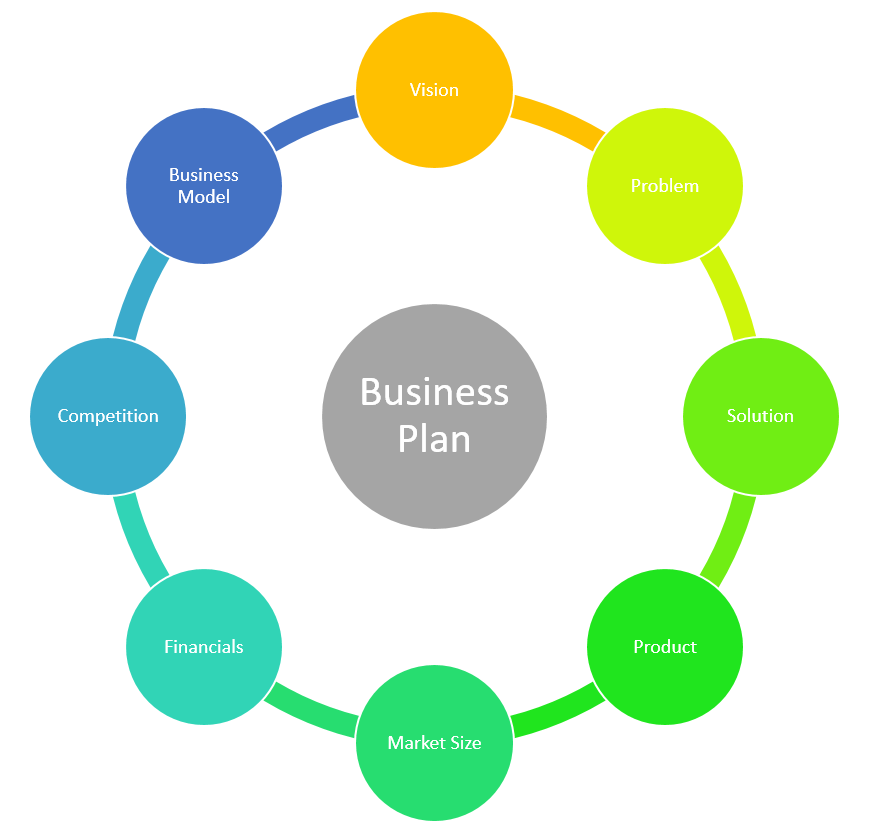
Starting your own business is a dream of many. Working under someone else and doing a 9-5 job can be boring and stagnant for your overall growth. Moreover, due to covid-19 thousands of people has lost their job.
In these times, starting a business plan can be beneficial for you. So, have to come up with a plan for your startup? Let’s begin with the very first step for the implementation of your dream: Writing down a business plan.
In this article, I will show you how to write a startup business plan.
What is a Business Plan?

A business plan is a document that summarizes your company’s goals, financial objectives, operation targets, and measures to accomplish these targets.
In simple words, it is a road map for a new business.
Components of a Business Plan
Executive Summary
Company Description
Market Description, Opportunity, and Industrial research
Competitor Research
Products and Service
Customer Research
Marketing Plan
Operational Plan
Financial Plan
Appendix
Why do you need a Business Plan?

1. Clear Vision
A well-constructed business plan helps you to see the progress of your company from a far sight. This can help you identify shortcomings and helps you to solve them.
2. A Big Picture
A business plan gives you clear pictures of your business as a whole. You can easily look at each component of the business and work on it.
3. Investment
To pursue an investor for investments you need a fail-proof business plan. A plan that has a clear revenue model and ideas will safely take you to a good amount of investment.
4. Strategies
A clear business plan helps you to get hold of market research and hence set your targets according to them. Moreover, it will help you to identify the market’s demand and distribute your product.
5. Process
With a clear business plan, you can get a look at your company’s progress.
6. Achieve target
When you have a clear map, you can formulate and implement your strategies in the same direction so that these could be achieved.
How to Write a Business Plan?
Here are some tips:
# Identify Your Audience: First, understand for whom you are writing this business plan. Once you identify your audience, you can create a better business plan.
# Simple and Clear: A business plan should be written in simple and clear language to avoid any misunderstanding.
# Invest Indirect Research: You need to conduct several types of research for a better formulation of strategy.
# Short: Keep your business plan concise. To make your plan ready to be implementing you should make it short and clear.
A Step-by-step Guide to Writing a Business Plan
Executive Summary

A good executive summary should include what your business does. What are your goals and objectives? A brief description of your product and service, potential market, current capital investment, and team.
Company Description
As the name suggests this section of a business plan includes a brief description of the company. This part identifies what you are and what you plan to do.
# A description of your business structure
# What are your products and services
# Your Industry
# Objectives, goals, vision, and mission
# Brief History
# Long term as well as short term objectives
# Team
Market Description, Opportunity, and Industrial Research

Why do you start a business? To earn money, right? Who will buy your products and services, is decided by your target market? The market is an important deciding factor for production, distribution, and revenue.
The first step includes identifying your market, industry, and growth opportunity. This will help you to identify the target customers and provide a relevant product.
# Find information about your industry by analyzing current trends and patterns.
# You need realistic metrics for better policy formulation and implementation.
# Conduct SWOT analysis as it helps to identify your strengths, weakness, opportunities, and threats.
SWOT Analysis
| Environment | Helpful | Harmful |
|---|---|---|
| Internal Environment | Strengths | Weakness |
| External Environment | Opportunities | Threats |
Competitor Research
Competitor research helps to take an overlook about your competitors who are currently selling similar products and services.
# At what price they are selling their products?
# how is their customer service?
# how many customers are they serving?
# What are their strategies and sale tactics?
# What is their current ranking?
These will help you to keep the prices of your products, serve your customers better, adapt better strategies, rank better, etc.
Products or Service
This section includes a description of your products and services. This section focuses on:
# What is your product or service is?
# Brief description of them
# Benefits of them for customers
# Intellectual property rights
Customer
Identifying customers is the first step for formulating your marketing plan. You should conduct real-time research of your customer’s demographic features.
Marketing Plan
This section includes current market decisions as well as plans. This section is directly proportional to your sales therefore be conscious while you formulate it.
Four important elements of your marketing plan:
# Price
# Product
# Promotion
# Place
Operational Plan
This section includes what steps you will adopt to achieve your target. This is important to fulfil your aims, goals, and objectives, formulate plans, and keep an eye on your growth analysis.
This section includes:
# Suppliers from where you purchase raw materials and other factors.
# how you manufacture or distribute them. In addition, how much you should produce.
# Facilities where you will work.
# Tools and technology used while products.
# Information about store facility, shipping, and fulfilment costs.
Financial Plan
This is the soul of your company. As a startup, you need investments for the execution of your business. Therefore this section includes all information about finance in the long and short term. This section includes:
# Financial statements
# Profit and loss
# Cash flow statements
# Balance sheets
# Liquidity ratio or debt repayment
Appendix
This section explains all the terms used in the business plan for future references.
Conclusion
A business plan is important for startups as well as an established companies. It acts as a guide for the company to formulate and take decisions in this same direction. It gives you a clear understanding of your company goals, objectives, long term aims.

